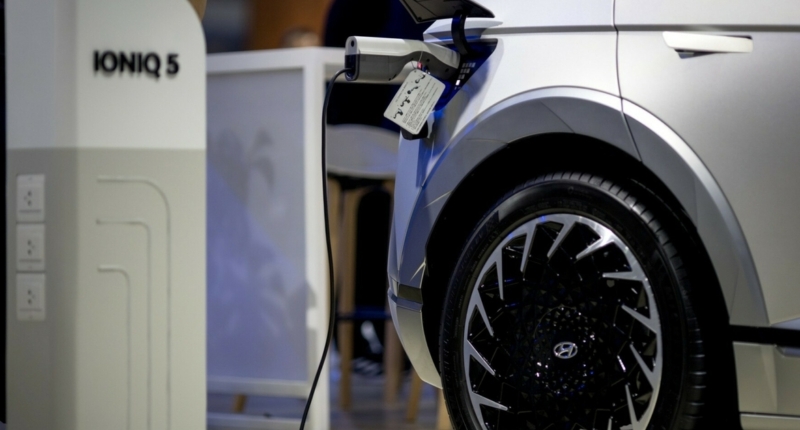Battery technology continues to develop, with raw materials such as lithium, nickel, cobalt, or manganese potentially no longer being needed in the future. Lithium iron phosphate batteries, which do not contain these raw materials, are already used in many cars, and sodium-based batteries with half the energy density of lithium are entering production. There are large quantities of lithium worldwide, and it can now be extracted in an environmentally friendly way. In addition, batteries are easy to recycle, with a large portion of the materials used being recoverable. While raw material scarcity is a challenge facing battery technology, there are alternatives and methods for sustainable extraction and recycling. As technology advances and demand increases, there may be brief shortages, but overall, the industry is poised to continue to grow and improve.
Electromobility: Raw Materials in Electric Cars
The European Union has agreed to greatly expand and harmonize the charging infrastructure, with the goal of being able to charge an electric car every 60 kilometers on main transport axes by 2026. Payment modalities will also be made more uniform.
One of the most frequently asked questions about electric cars is how far they can currently travel autonomously. Professor Dr. Martin Doppelbauer, a professor for hybrid-electric vehicles at KIT, says that the autonomy of electric cars is practical and poses no restrictions in everyday life. City cars with capacities of 50-60 kilowatt hours can reach a distance of 250 kilometers even in winter. Family cars with capacities of around 70-90 kilowatt-hours can travel 350 kilometers in winter and much further in summer. Battery-powered vehicles are the only mass-market alternatives to the internal combustion engine.
In terms of raw materials, there is a question of whether or not they will still be needed in the future. Dr. Doppelbauer states that synthetically produced e-fuels will likely remain far too expensive in the long run due to the large production effort involved. These fuels also have significantly worse environmental balances than electric cars due to the CO2 emissions from their production process. Additionally, e-fuels do not offer zero emissions in the overall balance and do not decrease local emissions in cities.
It would make more sense to use e-fuels in situations where there are no other options for decarbonization, such as ships or aircraft. However, battery-powered vehicles are the only mass-market alternative to the internal combustion engine, with almost ten million of these vehicles on the road worldwide.
The Challenges of Electromobility
The challenges facing electromobility are numerous, including the price of vehicles, the limited supply of low-cost options, and concerns about charging time and raw materials.
According to Prof Dr Dirk Uwe Sauer, there are currently few compact and mid-range vehicles with long ranges that are priced similarly to conventional cars. However, offering car rental options in addition to purchasing the car could provide greater flexibility and be quite attractive to consumers.
Another critical aspect of electric vehicles is the charging time of batteries. Prof Dr Martin Doppelbauer explains that the charging period with a Hypercharger is currently 20 to 30 minutes, which is short enough to cover greater distances without issue. However, charging time increases to 5-6 minutes per 100-kilometre range for cars with small batteries built for traversing shorter distances, and compromises between battery prices and charging speed will have to be made.
The maximum output of charging stations also affects charging time. Prof Dr Sauer explains that 350 kW technology can recharge energy for around 100 kilometres of autonomy in approximately three minutes. But because the battery cannot be fully charged at this speed, this would mean having to recharge for ten minutes about every 300 kilometres. However, as cars become more efficient, this time may be decreased to two minutes for a 100-kilometre trip with the same performance. Most drivers find the charging rhythm easy to adapt to and do not find it irritating or disagreeable.
The issue of raw materials is crucial in the discussion of electromobility. Extracting lithium and other rare substances in an environmentally friendly way and avoiding dependency is a significant challenge.
While these challenges exist, battery-powered vehicles remain the only mass-market alternative to the internal combustion engine. Prof Dr Doppelbauer notes that battery-powered vehicles can travel significant distances, with city cars with capacities of 50-60 kilowatt hours capable of reaching a distance of 250 kilometres even in winter, and family cars with capacities of around 70-90 kilowatt-hours able to travel 350 kilometres in winter and even further in summer.
In conclusion, while challenges remain, advancements in charging technology and battery performance will continue to make electromobility a viable alternative to traditional combustion engines.
The Future of Raw Materials in Battery Technology
According to Prof Dr Martin Doppelbauer, battery technology is still developing, and raw materials such as lithium, nickel, cobalt, or manganese may no longer be needed in the future. Lithium iron phosphate batteries, which do not contain these raw materials, are already used in many cars. Although rare earths are not used in batteries, lithium will continue to be necessary for high-performance batteries in the long run, even as sodium-based batteries with half the energy density begin production.
Fortunately, there are large quantities of lithium worldwide, including in Germany, and it can now be extracted in an environmentally friendly way. Additionally, batteries are easy to recycle, with a large portion of the materials used being recoverable.
However, according to Prof Dr Dirk Uwe Sauer, lithium extraction capacity will become scarce in the coming years. While capacities are being expanded, nations with large lithium reserves, such as Argentina or Bolivia, are not currently contributing significant capacities. Despite the high price of lithium, Sauer expects only a brief market shortage.
Sodium-ion battery technology provides some relief in the raw materials market for lithium-ion batteries in various segments. However, the problem of lithium scarcity cannot be solved by switching to other technologies such as fuel cells, hydrogen, or e-fuels, as production capacities here are extremely limited and demand cannot be fulfilled.
Furthermore, cobalt will be used less and less in car batteries, with alternatives such as lithium iron phosphate and sodium-ion batteries being primarily used in cheaper cars and for stationary use. This will provide further relief to the raw materials market.
In conclusion, while raw material scarcity is a challenge facing battery technology, there are alternatives and methods for sustainable extraction and recycling. As technology advances and demand increases, there may be brief shortages, but overall, the industry is poised to continue to grow and improve.
Don’t miss interesting posts on Famousbio










